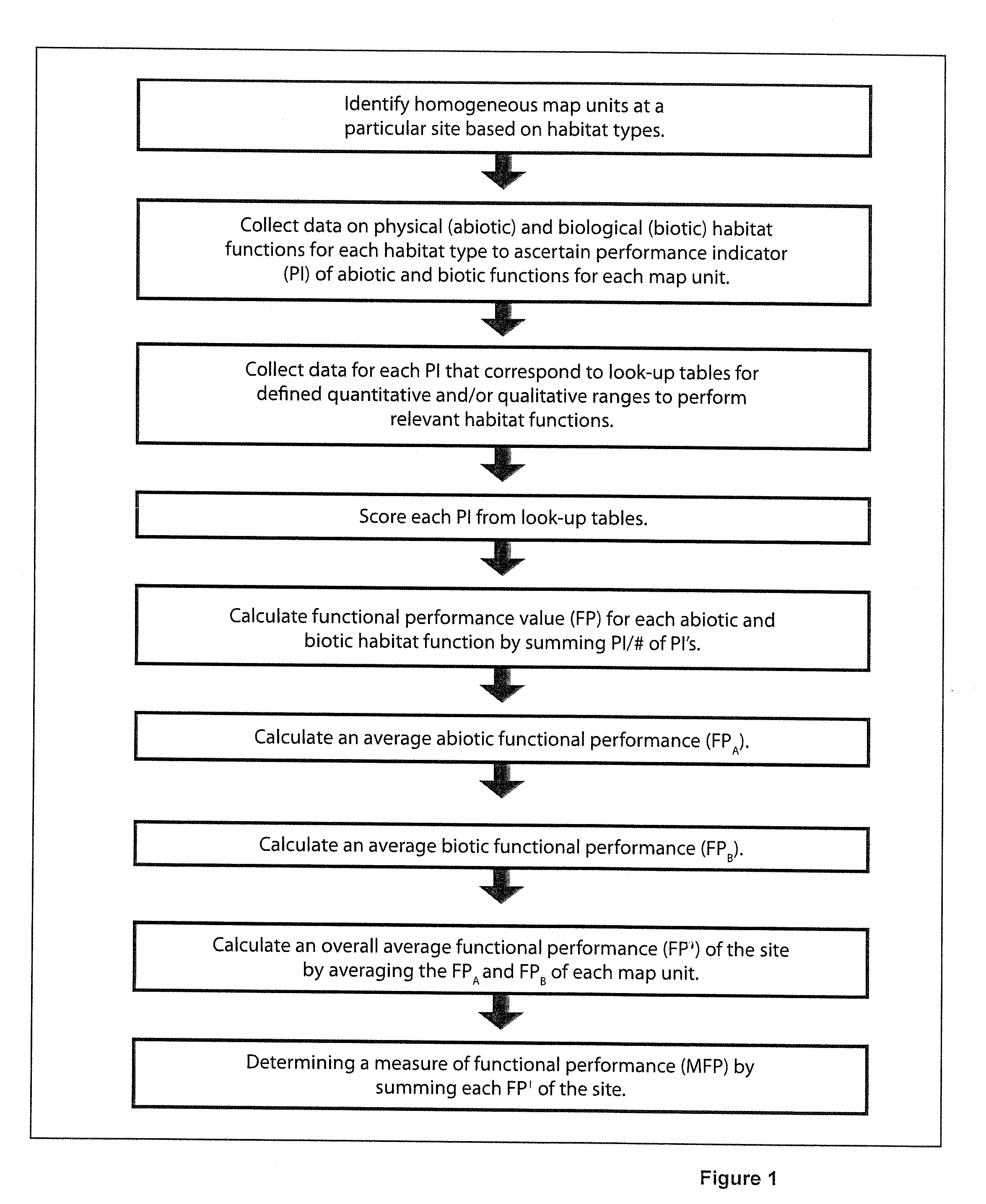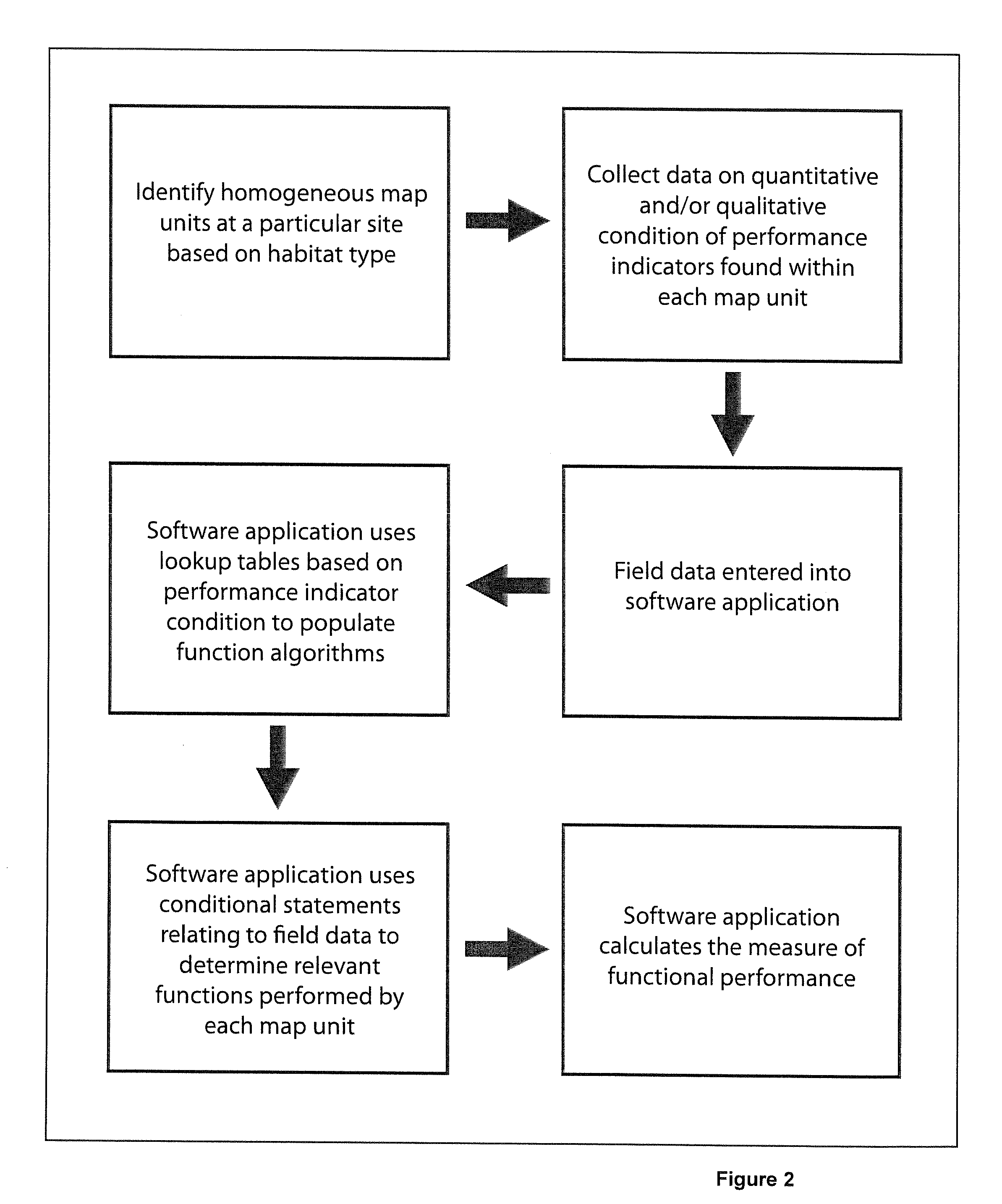Accounting tool for measuring ecosystem service functional performance at a particular site
a functional performance and accounting tool technology, applied in the field of accounting tools for measuring the functional performance of ecosystem services at a particular site, can solve the problems of inability to measure fine changes, inconvenient measurement of specific benefits or detriments of a functioning ecosystem, and inability to accurately determine the debit or credit, so as to achieve as much benefit, accurate determination of debit or credit, and high quality
- Summary
- Abstract
- Description
- Claims
- Application Information
AI Technical Summary
Benefits of technology
Problems solved by technology
Method used
Image
Examples
first embodiment
[0043]Referring to FIGS. 1, 3-10, the present accounting method measures functional performance (MFP), or the ecological condition value, at a particular site 10. Because it is rare that a particular site is solely one homogenous habitat type, the site 10 (see FIG. 3) typically is made up of two or more substantially homogeneous habitat types that comprise their own “map units”12 (also marked as sites BA1-2, BA1-4, BA1-6, BA1-8, and BA1-10 in the example of FIG. 3), based on particular site conditions (e.g., habitat types such as wetlands, grasslands, streams, forests, farmlands, development and / or areas differentiated from one another by key indicators such as the slope of a map unit). In the example represented in FIG. 3, the five map units are identified by various habitat types where Map Unit BA 1-8 is a riparian habitat with trees, Map Unit BA 1-4 is an emergent wetland. Map Unit BA1-2 is a perennial stream, Map Unit BA1-6 is a shrub-scrub wetland, and Map Unit BA1-10 is an uni...
second embodiment
[1265]Referring now to FIG. 11, the accounting tool of the present invention also can be used to calculate forecasted change to a particular site. According to the present invention, the MFPs value is also the baseline value measuring ecological conditions or functional performance (MFPsb or MFP baseline). It is the MFPsb that can be compared to the anticipated future MFPsf to determine whether a credit (uplift) or debit (decreased value) has been generated (this could also be done at the map unit level if desired). The difference between the two values can then be used as a number inserted into databases / registries, ecological commodities trading, mitigation banking, or for management / policy / regulatory assessment and action.
[1266]Change to a particular site can be measured by creating a future value, as described above for determining the MFP at a site (MFPs). The same methodology is used to recalculate the same site at a future time denoted as X in FIG. 11. This future period of t...
PUM
 Login to View More
Login to View More Abstract
Description
Claims
Application Information
 Login to View More
Login to View More - R&D
- Intellectual Property
- Life Sciences
- Materials
- Tech Scout
- Unparalleled Data Quality
- Higher Quality Content
- 60% Fewer Hallucinations
Browse by: Latest US Patents, China's latest patents, Technical Efficacy Thesaurus, Application Domain, Technology Topic, Popular Technical Reports.
© 2025 PatSnap. All rights reserved.Legal|Privacy policy|Modern Slavery Act Transparency Statement|Sitemap|About US| Contact US: help@patsnap.com



